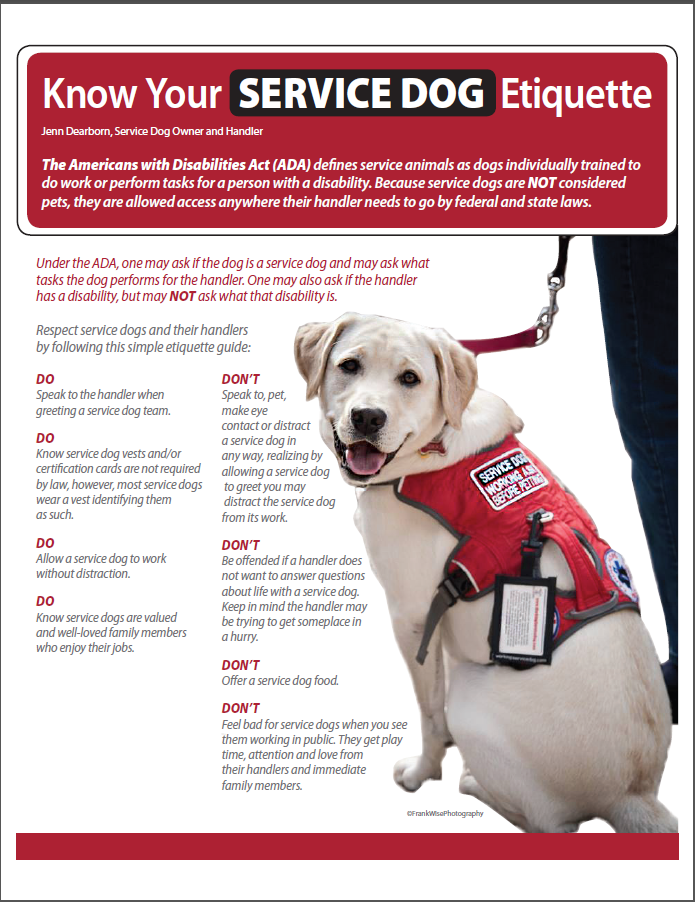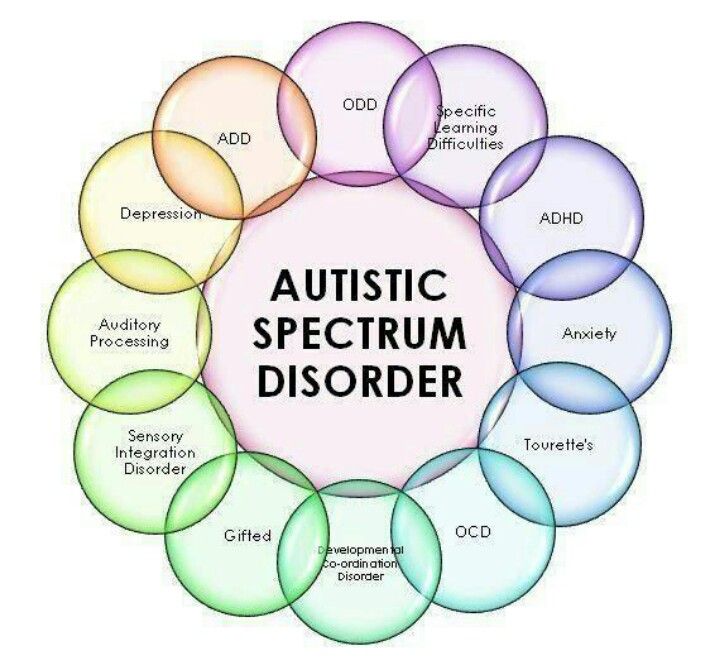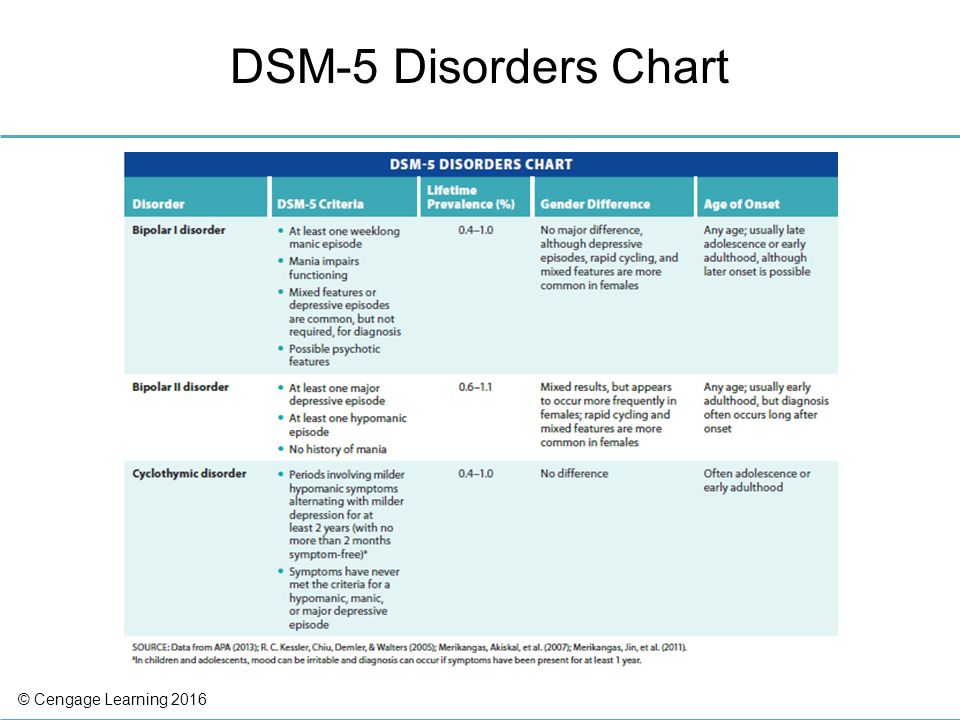Benefits of service dogs
Benefits of Service Dog | Physical & Emotional Benefits
People with disabilities can augment all aspects of their lives with service dogs, who execute crucial aid depending on the disability of their owner. The Americans with Disabilities Act (ADA) stipulates that service dogs are specially trained to assist a person with disabilities in their tasks and daily life activities. The tasks that service dogs perform are essential actions, like guiding people with visual impairments, signaling certain sounds for those who are deaf, retrieving items for people with mobility issues or alerting about impending cardiac episodes or seizures.
Aside from these physical aids, service dogs also have other advantages that enhance emotional well-being from their unique bond with their owners.
Contact CPL for a Service Dog
Physical Benefits of a Service Dog
Different disabilities require specific things from service animals, and their training even differentiates this for them before they start working with a person with a disability. Service dogs undergo training for social situations, behavior requirements and specialized disability care. At Canine Partners for Life, service dogs complete two full years of training before being matched to an individual with a disability.
Service dogs support people’s physical disabilities in a variety of ways. Often their alerts are preventative for conditions like epilepsy and dysautonomia. But many of their tasks are household actions like turning on lights and providing stability for their owner for standing, walking or transferring out of a wheelchair.
Support for a Physical Disability- Benefits of Service Dogs for People in Wheelchairs
For people who have limited mobility, service dogs provide physical support. Mobility assistance dogs can open doors for those in wheelchairs, manipulate light switches and pick up objects off the ground or retrieve them from other spots. Individuals with mobility disabilities may need the dog to help switch from their wheelchair to another position, like their bed or a toilet.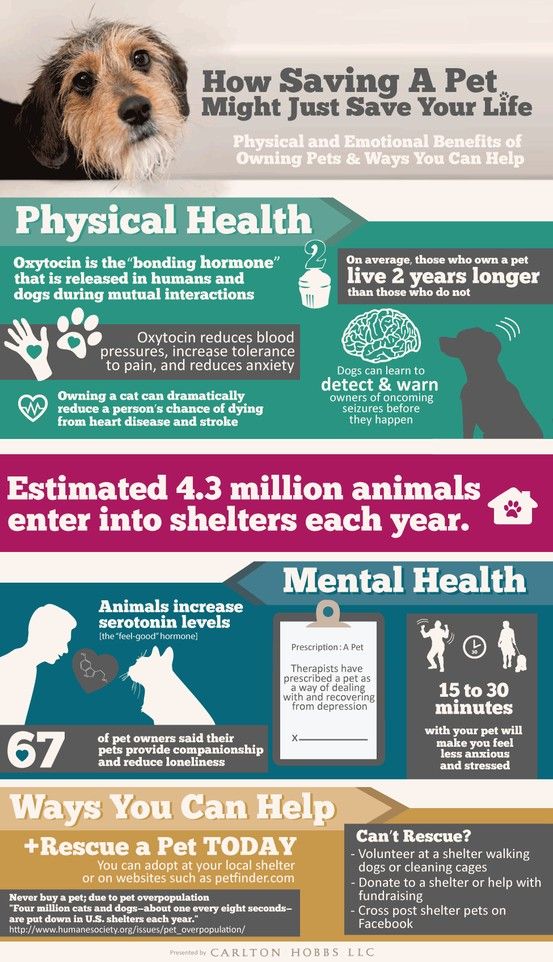 Dogs can also unload laundry from the dryer. Some other capabilities of service dogs are paying cashiers, pressing handicapped accessible buttons and pressing elevator buttons.
Dogs can also unload laundry from the dryer. Some other capabilities of service dogs are paying cashiers, pressing handicapped accessible buttons and pressing elevator buttons. - Benefits of Service Dogs for Epilepsy
People with epilepsy have service dogs who are trained to alert their human partner before a seizure occurs which helps prevent injury during a seizure. Seizure alert dogs have an innate ability to detect the onset of a seizure. When they sense an imminent seizure, the dogs give their owners a signal like pawing, pacing, intense staring or placing their head or nose on their owner. During a seizure, service dogs will lie down close to the person having the seizure. If the alert is seen in time, individuals with epilepsy can prepare themselves and get to somewhere safe, such as on a soft surface or on the floor, before the seizure happens. After the seizure is over, the dog may go and seek additional help if it’s needed. - Benefits of Service Dogs for People with Physical Challenges or Fatigue Issues
For individuals with disabilities that cause fatigue, pain, trouble walking, balance issues, or limited mobility, service dogs can help! Like the mobility tasks for wheelchair users, service dogs can also help people regain balance and prevent falling.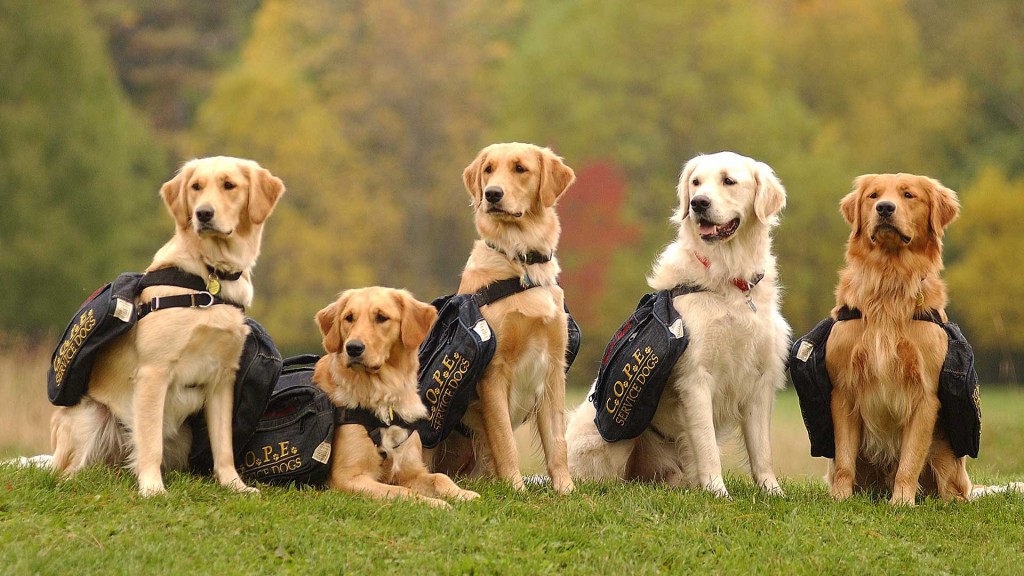 The dog can carry items if the individual is too weak to move or hold them. Because service dogs are allowed by law in public places for the benefit of their owners, this means they can perform these assistive tasks in the grocery store, on the sidewalk and other public areas.Using a service dog for balance can help when unstable walking and stumbling occur. Service dogs are trained for various bracing maneuvers to prevent falls, provide secure footing after making a difficult move and recover control.
The dog can carry items if the individual is too weak to move or hold them. Because service dogs are allowed by law in public places for the benefit of their owners, this means they can perform these assistive tasks in the grocery store, on the sidewalk and other public areas.Using a service dog for balance can help when unstable walking and stumbling occur. Service dogs are trained for various bracing maneuvers to prevent falls, provide secure footing after making a difficult move and recover control.
Overall, service dogs allow a greater level of safety for individuals with disabilities. Whether a chronic illness or a mobility impairment is hindering your routine and fundamental practices, expertly trained service dogs can become your partner in many activities. A service dog as a team member can work with you to transport items, help you move from place to place and keep you healthy. They can retrieve medicine, first-aid kits or insulin kits.
Contact CPL for a Mobility Service Dog
Emotional Benefits of a Service Dog
While physical benefits are the most obvious and immediate ways for a service dog to assist a person with disabilities, emotional benefits are also common for people who bring a service dog into their life. In general, pets boost their owner’s level of social confidence and enable them to develop supportive relationships with others. The following emotional benefits are specific examples of this connection:
In general, pets boost their owner’s level of social confidence and enable them to develop supportive relationships with others. The following emotional benefits are specific examples of this connection:
- Companionship
Gaining a service dog means adding a loyal companion to your life that goes beyond typical canine devotion. A service dog can help and accompany you in many situations, and many service dogs can keep you accountable if you neglect proper management of their chronic illness or disability. This sense of security and consistent care will take some of the burden of your illness or disability off of you. Additionally, with a service dog, you’re not alone. It’s very easy to feel isolated when a condition limits your ability to complete everyday tasks, but a dog provides companionship that can ease feelings of loneliness. - A Greater Feeling of Independence
You can rely less on other humans for help with tasks such as carrying something or opening a door.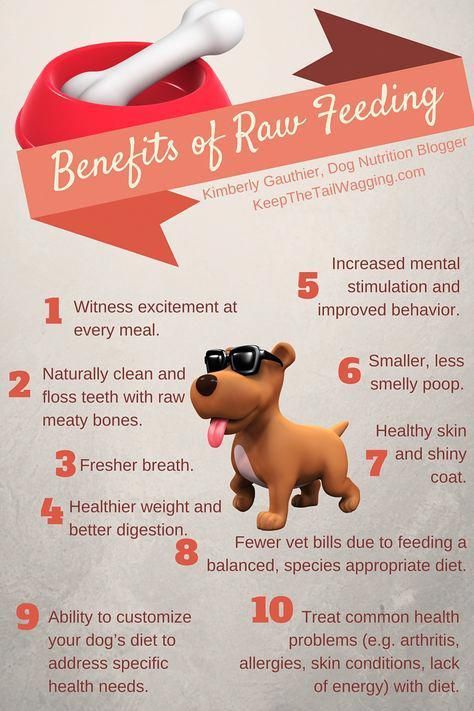 Instead, you can transfer your needs to your service dog, who is constantly available to assist and ready to be helpful.The toll of relying on other people for daily tasks can wear on you after a while, and despite eager family members and others who will step in, you may feel you are restricted and dependent on others. A service dog reduces or eliminates that feeling and brings back a sense of freedom.
Instead, you can transfer your needs to your service dog, who is constantly available to assist and ready to be helpful.The toll of relying on other people for daily tasks can wear on you after a while, and despite eager family members and others who will step in, you may feel you are restricted and dependent on others. A service dog reduces or eliminates that feeling and brings back a sense of freedom.
- Increased Confidence in Social Settings
Owning a service dog not only cultivates personal happiness, but it also increases socialization for people with disabilities. A service dog can empower you to become more active in social circles. Because you have your companion, you feel more comfortable in situations that you might previously have expected to be tiring or be unable to participate in. You may also notice you’ll get attention from passersby. Though your dog is always on duty, and strangers cannot interact with your dog, this scenario is another way conversations and positive social interactions can be initiated. Even relationships with relatives are improved by the presence of service dogs. They are less worried about the person with a disability when they are absent. Home life with family members is less stressful with the aid of a service dog, too. Relationships can flourish when the service dog bears some of the responsibility in caring for a person and can alleviate some of the demanding tasks of the main caretaker.
Even relationships with relatives are improved by the presence of service dogs. They are less worried about the person with a disability when they are absent. Home life with family members is less stressful with the aid of a service dog, too. Relationships can flourish when the service dog bears some of the responsibility in caring for a person and can alleviate some of the demanding tasks of the main caretaker. - More Motivation
Experiencing pain and challenges every day weighs many people with disabilities down, and fluctuations in health are taxing. Service dogs can help you regain motivation to handle the potential challenge of daily chores and bring some joy in day-to-day activities. A service dog still requires care from their owners, too, so that dependence and connection between dog and human creates a reason to keep going. - Self-Improvement
A service dog allows many people with disabilities to do things they did not think were possible and to frequent public places with less worry.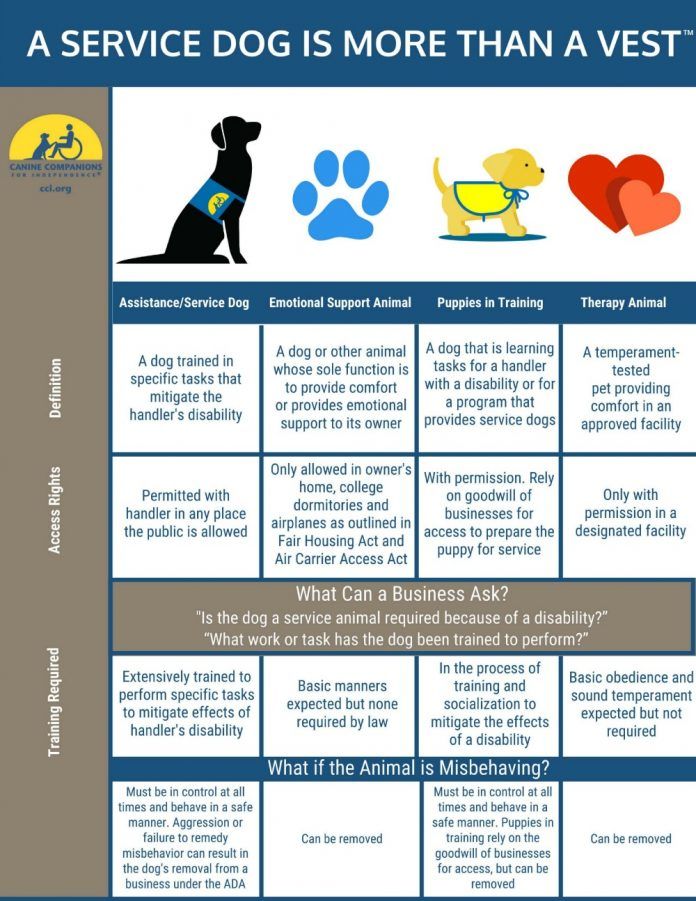 The hope for new possibilities and further improvements that a service dog brings is comforting. People with disabilities can entertain ideas they did not think they could attain and set goals they did not think they could reach. The benefits of service dogs for disabled individuals include many positives, but an optimistic view of the future is a significant one.
The hope for new possibilities and further improvements that a service dog brings is comforting. People with disabilities can entertain ideas they did not think they could attain and set goals they did not think they could reach. The benefits of service dogs for disabled individuals include many positives, but an optimistic view of the future is a significant one.
Contact CPL for a Service Dog
Should You Get a Service Dog?
If you have a disability that service dogs are trained to assist with, then a service dog may be right for you. Some disabilities that they commonly are trained to help with are:
- Mobility impairments and balance disorders
- Trouble using arms or hands
- Chronic fatigue conditions
- Epilepsy
- Cardiac syncope conditions
- Diabetes
If you’re not sure your disability is extreme enough to have a service dog, decide whether your day-to-day life would become significantly easier and safer with the help of a dog.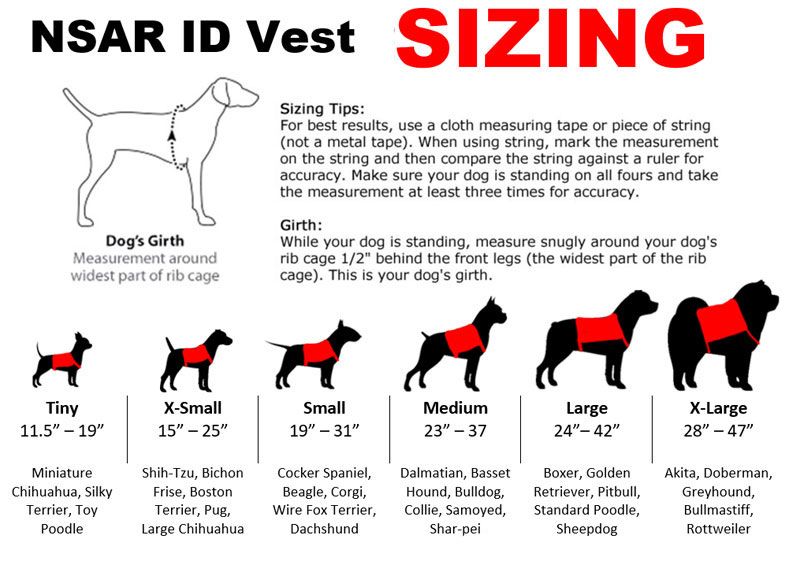
Getting a service dog does not happen immediately, as there must be a good fit between you and the dog as well as one that is trained specifically to cater to your disability. Service dogs also go through training for obedience, advanced disability service and personalized needs. This takes time, but if you are willing to invest in the system and training, you will have a trustworthy companion and service provider in your dog.
Look to Canine Partners for Life for Your Service Dog
Canine Partners for Life works to improve the quality of life and increase independence of those with disabilities by pairing them with professionally trained service dogs. Our program includes follow-up training and support services to ensure our service dogs meet and connect to the unique situation of a person with a disability.
Contact us to learn more about service dog organization and the training program.
Benefits Of Service Dogs For Chronic Illness
Benefits Of Service Dogs For Chronic Illness | Care+WearPrevious | Next
About The Author: My name is Katie, I am 29 years old, disabled, and have multiple chronic and terminal health issues.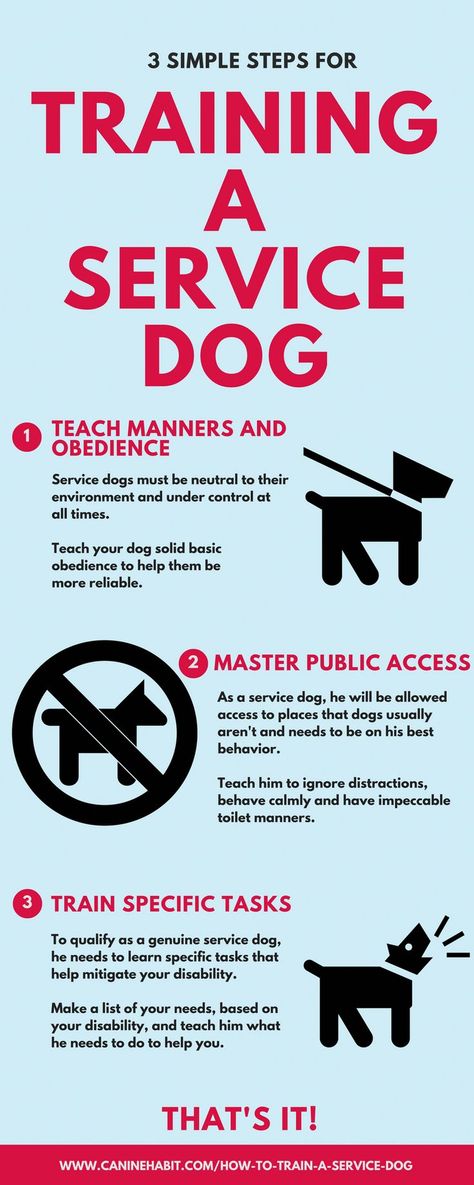 I wanted to share some of the ways that service dogs can help individuals with disabilities as well as some important facts to know before getting one yourself.
I wanted to share some of the ways that service dogs can help individuals with disabilities as well as some important facts to know before getting one yourself.
What Is A Service Dog?
The Americans with Disabilities Act (ADA) defines a service animal as “dogs that are individually trained to do work or perform tasks for people with disabilities.” Some examples they provide include guiding people who are blind, alerting people who are deaf, pulling a wheelchair, alerting and protecting a person who is having a seizure, reminding a person with mental illness to take prescribed medications, and calming a person during an anxiety attack.
The ADA clearly states that service animals are working animals, not pets. The work or task a dog has been trained to provide must be directly related to the person’s disability. Dogs whose sole function is to provide comfort or emotional support do not qualify as service animals under the ADA.
Why I Chose To Get A Service Dog
Shown on the left is my service dog Rosie, who is a 2.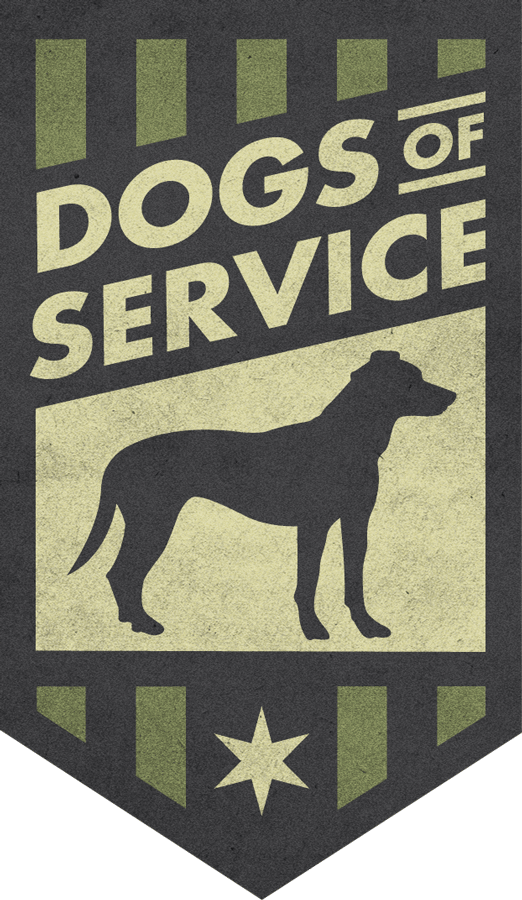 5-year-old Labrador and Pointer mix (Weimaraner and Vizsla). Her tasks include cardiac alert, light mobility, and retrieval tasks! She is owner trained and closely followed by her vet, private trainer, and vet tech to ensure her well-being and ability to safely keep working at what she does best.
5-year-old Labrador and Pointer mix (Weimaraner and Vizsla). Her tasks include cardiac alert, light mobility, and retrieval tasks! She is owner trained and closely followed by her vet, private trainer, and vet tech to ensure her well-being and ability to safely keep working at what she does best.
I chose to pursue getting a service dog when multiple physicians recommended the benefits that a service dog can have on your mental and physical health. Aside from being a great help with my disability and always making me feel safe in case of an emergency, she also makes a great companion. She loves spending time with me and cuddling up on the bed or couch, as long as she is with me she is one happy girl. She’s the perfect definition of a “grey ghost" that’s always following me around and half of the time I don’t even hear her!
What Are The Benefits Of Having A Service Dog?
- Aiding Mobility: Service dogs can provide physical support to those with limited mobility such as wheelchair users.
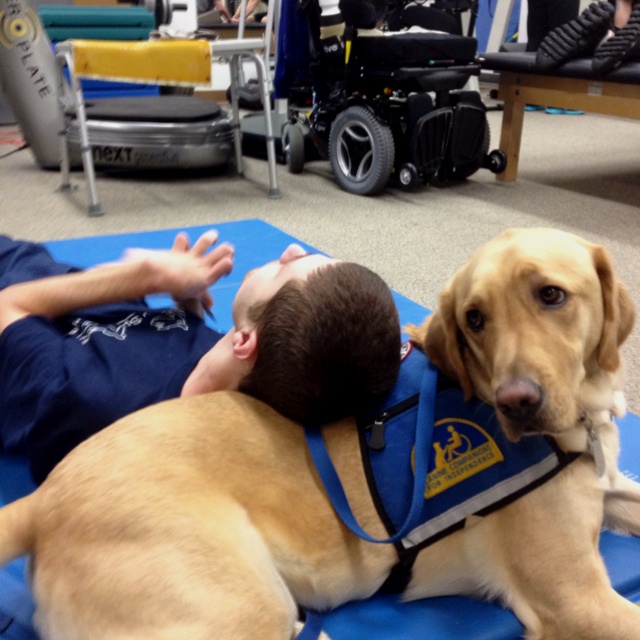 Mobility assistance dogs can be trained to do tasks such as open doors, turn light switches on and off, fetch objects for their owners, pay cashiers, and press elevator buttons.
Mobility assistance dogs can be trained to do tasks such as open doors, turn light switches on and off, fetch objects for their owners, pay cashiers, and press elevator buttons. - Staying Constantly Alert: Service dogs can be trained to help alert people when they are experiencing a medical crisis. For example, a person with epilepsy having a seizure or a person with dysautonomia experiencing a syncopal episode (feeling of faintness and loss of consciousness). This can allow the owner to be prepared before an episode and get to a safe environment such as a soft surface or on the floor, in order to help prevent injury. During or after the episode, the dog can also seek additional help if needed.
- Assisting With Everyday Tasks: Individuals with disabilities that cause fatigue, pain, trouble walking, or limited mobility can highly benefit from having a service dog. Service dogs can help people regain balance, prevent them from falling, fetch medications, and carry items such as groceries if the owner is too weak to move or hold them.
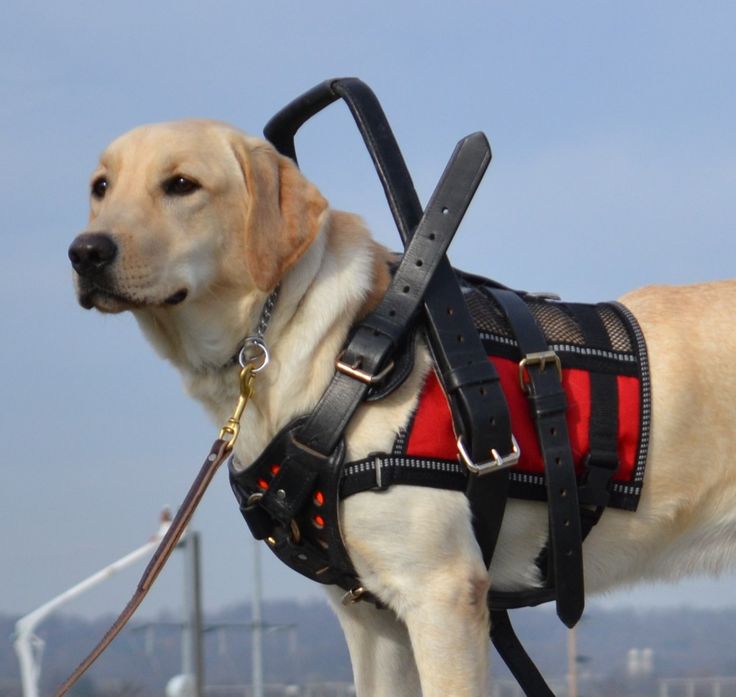
- Providing Companionship: Not only do service dogs provide physical support, but they are also great for providing emotional support. Service dogs act as loyal companions which can help ease feelings of loneliness and provide a sense of security and consistent care. As they say, dogs are man's best friend! Studies have also shown that service dogs provide health benefits and can increase fitness, lower stress, and improve happiness.
- Allowing Increased Independence: Service dogs allow people living with chronic illness and/or disability to experience a greater sense of freedom and independence. Having a service dog means you have to rely less on other humans to help with everyday tasks, which can allow you to feel restricted or dependent on others. Instead, you can transfer your needs to your service dog, who is constantly ready and available to assist you.
Important Things To Keep In Mind About Service Dogs
- Choose The Right Breed: It’s KEY to do your research before getting a service dog, specifically on what breeds will help mitigate your individual needs.
 For instance, a 15 pound Jack Russell terrier should never be used for mobility tasks whereas a Labrador is more appropriate than a small dog for mobility. Also, dogs need to have a certain temperament and drive in order to be a service dog. Before choosing a dog, be sure to test out their temperament, alertness, and everyday behaviors. I looked at 7 different litters before choosing my service dog!
For instance, a 15 pound Jack Russell terrier should never be used for mobility tasks whereas a Labrador is more appropriate than a small dog for mobility. Also, dogs need to have a certain temperament and drive in order to be a service dog. Before choosing a dog, be sure to test out their temperament, alertness, and everyday behaviors. I looked at 7 different litters before choosing my service dog! - Correct Training Is Essential: Service dogs need to be well-trained and highly obedient as they should be constantly alert and ready to help. If service dogs are not well trained as puppies, they can begin showing aggressive behavior such as chewing, destructive behaviors, aggression towards other dogs, etc. If this behavior is not corrected during the training phases while the dog is still young, it will be twice as difficult to fix later on. Success rates for effective training are not as high if it occurs later in life and can lead to your service dog being pulled from service work.
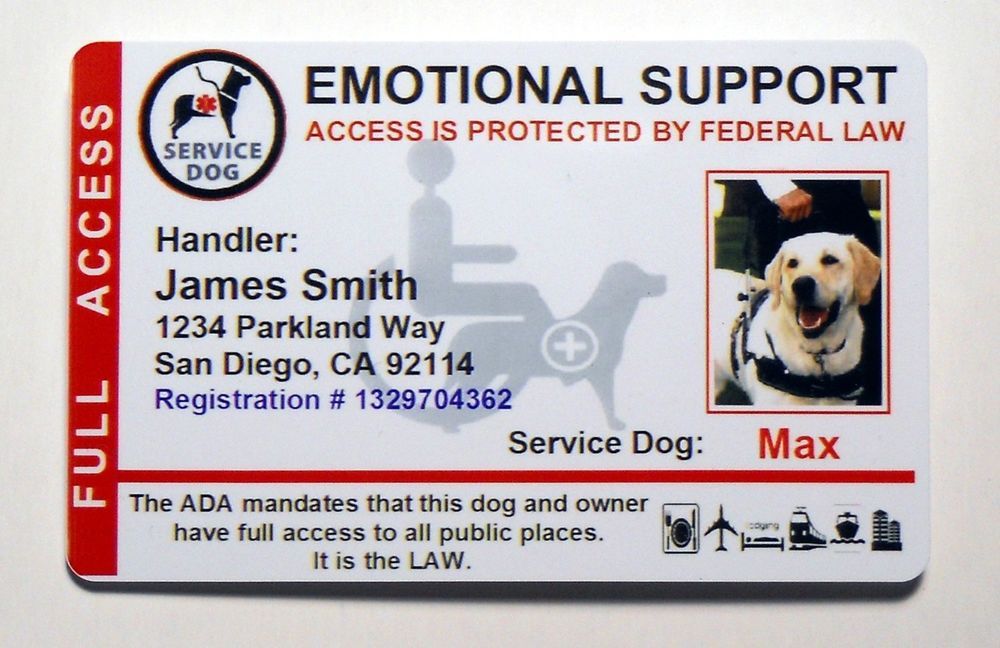
- Costs Add Up: Another thing to keep in mind is the financial costs of having a service dog. They require extra vaccines, vet care, upkeep, and training, which can be quite costly. Be sure to talk with your doctors and care team to decide if it's a financial cost that makes sense for you. There are also some financial assistance programs available to help with the purchase of a service dog.
- Traveling Can Get Complicated: Some airlines have extra requirements and documents such as a health certificate, vaccine list, and physicians and vet notes stating that your dog is a service dog. Usually, letters signed by doctors are valid for 1 calendar year, so be sure all of your paperwork is up to date before traveling with your service dog.
Refer To State And Federal Guidelines
The ADA very specifically outlines what qualifies as a service animal in the USA. Currently, only dogs and miniature horses are legally recognized as service animals. Emotional support animals are not protected under federal law and are not task trained to help mitigate one's disability! So next time you see an iguana, chicken, hedgehog, bunny or cat, rest assured it is not a service animal. While they can be great for providing emotional support, they are not qualified to be trained service animals.
Emotional support animals are not protected under federal law and are not task trained to help mitigate one's disability! So next time you see an iguana, chicken, hedgehog, bunny or cat, rest assured it is not a service animal. While they can be great for providing emotional support, they are not qualified to be trained service animals.
If you see someone flashing a fancy service animal ID tag, 9/10 times it has no legal significance. It’s easy for many people to go on eBay or Amazon and purchase a vest tag and ID for their dogs, but this does not mean they are professionally trained and registered service dogs. Always refer to the federal guidelines (ADA, FHA, ACAA), state, and local laws!
I hope my experience as well as the information outlined helps current and potential future service dog owners. You can connect with us on Instagram at @service_dog_rosie. Love, Katie and Rosie!
Leave a comment (all fields required)
Comments will be approved before showing up.
Articles and interesting materials about animals
How exactly the domestication of dogs occurred is not exactly known. But it can be assumed that guarding a person's house was one of the first canine "jobs".
Today, dogs are involved in many types of security and rescue services. Electronics, precision instruments and scientific and technological progress are still not able to replace the sharp sense of smell of dogs. For example, only dogs can accurately determine whose item was left at the crime scene. The detectors are wrong, but the dogs are not.
Where they use service dogs
- Search for people
- Patrol service
- Safety of passengers in transport
- Customs Verification
- Rescue operations
9000 - Protection of departmental facilities
- Search for explosives and drugs
- Detention of criminals
Where service dogs come from
Just like that, a dog cannot become a service dog.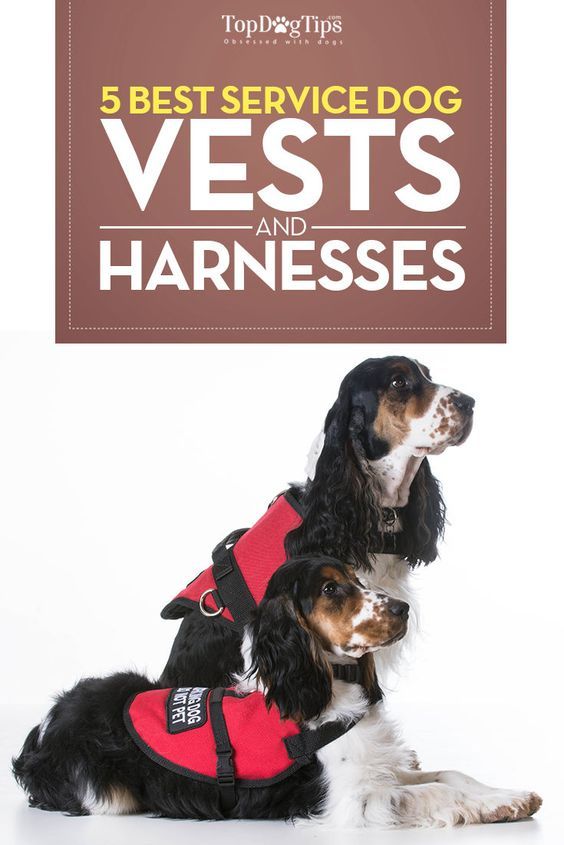 Service dogs are trained from puppyhood.
Service dogs are trained from puppyhood.
There are 4 main ways where puppies are taken from:
1. They are raised in special kennels of the Penitentiary System (abbreviated as penitentiary system)
2. From service dog breeding clubs
3. a breeder who likes 903 can buy a puppy 903 4. Animals of employees (police officers, rescuers, cynologists, customs officers) who, on duty, must work with a dog
If their pet fits, he gets on the "balance" and is trained.
Which breeds are suitable
There are no clear rules here. But still, the breed matters, because not every dog can withstand high loads.
For the detention and escort of criminals (FSIN service), priority is given to the following breeds: – German Shepherd
– East European Shepherd
– Malinois (Belgian Shepherd)
– Rottweiler
– Black Russian Terrier
Other breeds that are suitable:
– Labradors, Border Collies and Retrievers do not have aggression, so they are good as rescuers.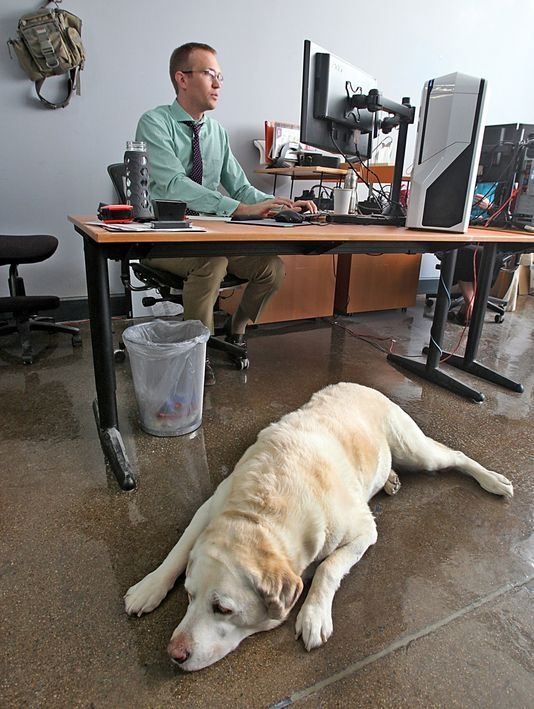
– Due to their small size Spaniels are more likely to work in customs and seaports. A compact dog is easier on a ship than a large one.
The German Shepherd is considered to be versatile and suitable for all types of service.
The sex of the dog does not play a special role - it depends more on the preference of the person who conducts the selection and who will continue to prepare the dog.
Not suitable:
– Dwarf and ornamental breeds
No one is fundamentally against these breeds, but they are guided by common sense. Bolonka or Yorkshire Terrier will not be able to search for people under the rubble or escort criminals.
- Aggressive breeds
- Giant breeds over 50 kg
Selection criteria for service
Not all puppies and young dogs are suitable for service. They have to go through a rigorous selection, which is conducted by the commission. As a rule, such a selection is carried out several times.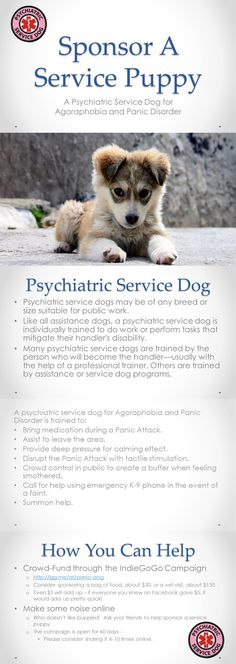 The first time is when the puppies are still small. They begin to be selected for further education at the age of 2-2.5 months. Then, before the start of training, there will be a more rigorous selection. Suitable age for the course is from 9up to 20 months.
The first time is when the puppies are still small. They begin to be selected for further education at the age of 2-2.5 months. Then, before the start of training, there will be a more rigorous selection. Suitable age for the course is from 9up to 20 months.
Each type of service has its own specifics, so the selection criteria may vary. However, there are basic, basic requirements without which puppies and young dogs are not even considered. Experts explain this by the fact that a service dog is a full-fledged employee, the right hand of a person, and the training requirements are very high.
Requirements
– Healthy genetics
Without congenital and chronic diseases.
- Endurance
This is an important quality. At the start, they try to take the strongest and most confident puppies, because they have to work in different, including extreme conditions.
- Strong backbone
- Strong, well -developed muscles
- PIT -AND PITLE
- Healthy teeth
9000 - Good vision
- Reaction, irritants
9000 - Good smell
The ability to detect the right person by smell in a professional language is called sampling.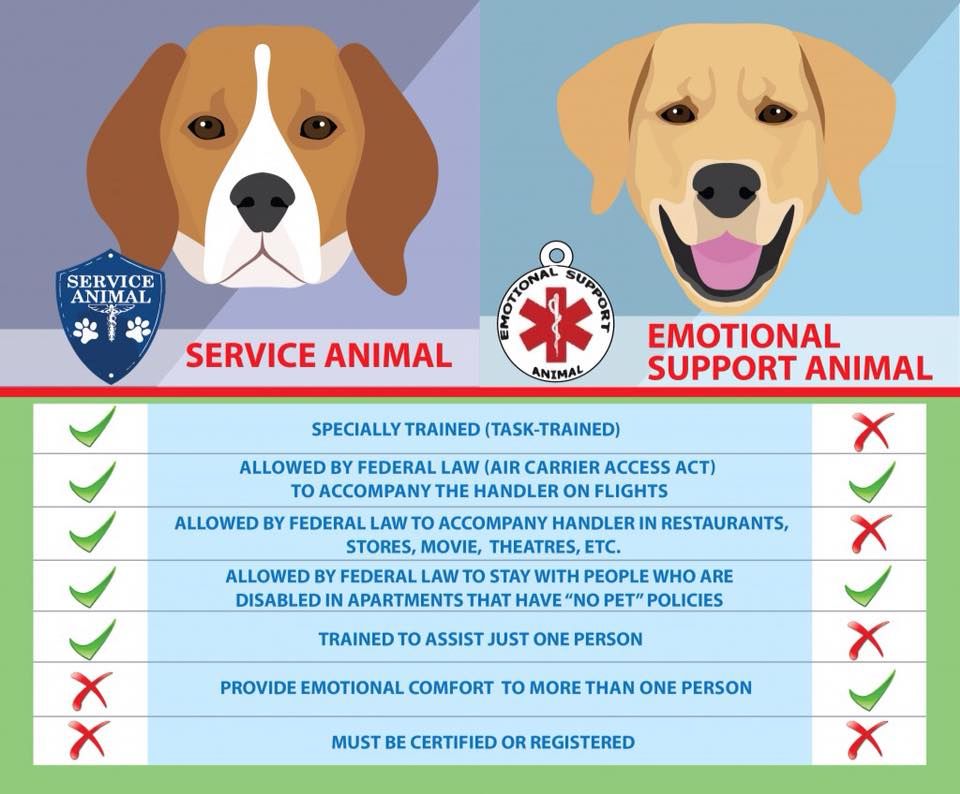 This is one of the main qualities of search dogs.
This is one of the main qualities of search dogs.
- Learnability
– Stress resistance (type of higher nervous activity)
To make it clear what types we are talking about, let's turn to the discovery of the famous Russian physiologist Ivan Petrovich Pavlov. He identified 4 types of nervous activity in dogs:
1. Strong, balanced - sanguine
2. Strong, unbalanced - choleric
3. Inert - phlegmatic
4. Weak - melancholic
Each type of nervous system has its own approaches and methods of training.
As we can see, many of the criteria are similar to the requirements for "human" professions.
There are various tests and games that help to understand the puppy's qualities and determine the ability to learn and work in the future. For example, when visiting a breeder, specialists will look at how puppies behave in a pack, whether they have leadership qualities, whether they allow themselves to be pushed away from food, or, conversely, they climb ahead.
Another test is related to the ability to adapt to an unfamiliar situation. Puppies are taken in turn to unfamiliar territory and watch how they behave. The advantage is given to those who are not confused, show curiosity, do not show fear.
One of the tests for older puppies determines the ability to follow the trail. This is one of the most important skills in investigative work. The test looks like this. On the site, a trace is laid of a person who is well known to the puppy. Then a puppy is released, which must explore the area and find a person. The faster the puppy copes with the task, the higher its potential in learning. If a puppy fails the test, they are not fit for work.
How is the training
After the puppy is recognized as promising for service, he learns a basic set of commands. According to the results, he will have several more selections, and only then the grown puppy will be sent to specialized training. As a rule, preparation for such training begins 1.5-2 months in advance. During this period, the dog is under the supervision of a veterinarian who ensures that all necessary vaccinations are made and deworming is carried out.
As a rule, preparation for such training begins 1.5-2 months in advance. During this period, the dog is under the supervision of a veterinarian who ensures that all necessary vaccinations are made and deworming is carried out.
In Russia, only future service dogs are trained only by state institutions.
For example,
- dog training center of the Federal Security Service
- dog training center of the Federal Customs Service
- dog service of the Federal Penitentiary Service
When a puppy is 3-4 months old, he is assigned to a dog handler with whom he will serve after training. Classes begin with the simplest skills. First you need to establish contact, explain the basics of behavior, and only then proceed to training. The first course is obedience, because otherwise an unruly dog can only harm the work, and not help.
From about 9 months old, the puppy goes to school for a new training. The duration of training depends on the service for which the puppy will go, but not less than 5 months.
The training is divided into 3 parts:
– general course
– special course
– training course
In general, a year is allotted for the full training of the dog. After successfully completing the training and passing the "exam" (certification), the dog continues to train, but according to a special schedule - at least 8 times a month. In general, service dogs learn throughout their entire service life, because they need to maintain their skills all the time, otherwise the conditioned reflexes fade away. Every day a service dog has new people, objects, smells, situations, which means that its abilities must be at its best. Here you can bring an analogy with sports. If an athlete stops training, he loses his endurance and will no longer be able to show the same results. In addition, the dog must maintain interest in the service, and this is only possible by constantly teaching so that the dog is not bored.
Successful training depends not only on the ability of the dog, but also on the person who trains.
Such specialists are subject to no less stringent requirements than service dogs.
– Above all, a specialist must love animals
This is the foundation of the basics. If you don't like working with dogs, nothing good will come of it.
– Knowledge of the rules and methods of dog training
– Professionally master training techniques in practice
– Balance
An angry person will not be able to work with dogs that feel danger and aggression.
- Decisiveness
- Perseverance
- Patience
Service training is a responsible process. Dogs may not understand from the first or even the tenth time, they may not succeed in something, they may get tired. The coach should not get annoyed over trifles, give up, leave half-learned elements.
– Organized
Chaos man will not be able to properly build the training process and methodically polish the necessary abilities.
– Observant
Animals, like people, have their own character. In the learning process, it is important to find the “key” to a particular pet in order to quickly unlock its potential.
Training sessions, regardless of the age of the dog, are carried out in a playful way, and they are built according to the principle from simple to complex. It is important to interest the dog - the higher the interest, the better and faster the result will appear. All work is built on a positive, when the best reward is an encouragement from the trainer and a piece of food or a favorite treat.
It is difficult to say which service is the most difficult. Any office work requires honed skills and responsibility. There are subtleties in training for each type of service. For example, let's take the search for drugs. Synthetic drugs have a strong unpleasant odor. A dog's sense of smell is much finer and sharper than a human's, so a strong smell repels dogs. The dog is accustomed to such smells gradually.
In the search and rescue service, a dog can face completely different tasks: searching for victims after earthquakes and explosions, landing in hard-to-reach areas, searching for missing people in a dense forest. The list of skills that a trained dog must possess is extremely wide. During training, the development of skills proceeds incrementally and eventually leads to action, as it can occur in a real situation. For example, the search for people who, in a panic, climbed high trees or lie unconscious. In order to consolidate and work out the acquired knowledge, instructors constantly change and diversify training situations.
Interesting facts
1. The dog and the cynologist who will work with it are selected according to temperament “in contrast”. For example, an active person is a calmer dog and vice versa.
2. Before being hired, after training, the dog is assessed.
Further certification is confirmed every year.
3. If a dog has bitten a person during certification or in class, it is disqualified for life and can no longer serve.
4. Service dogs can pick up the right scent at a distance of 500 meters.
Their sense of smell is 100 million times stronger than a human's. The longest distance at which the dog managed to catch the desired smell was 3.2 km. This result belongs to a rescue dog in the tundra in Alaska. There were other amazing cases as well. For example, dogs smelled people under the rubble of 5 meters.
During rescue operations, dogs feel emotions. When a terrorist attack occurred in America in 2001 and a shopping mall collapsed, dogs found a lot of dead people. Dog handlers saw that the dogs were stressed because of this and, in order to cheer them up and give them confidence, they asked volunteers to hide among the wreckage so that the dogs could find at least one of the survivors.
5. On average, dogs serve 8 years.
In some cases, the service life can be extended to 10-12, but only under the condition of good health.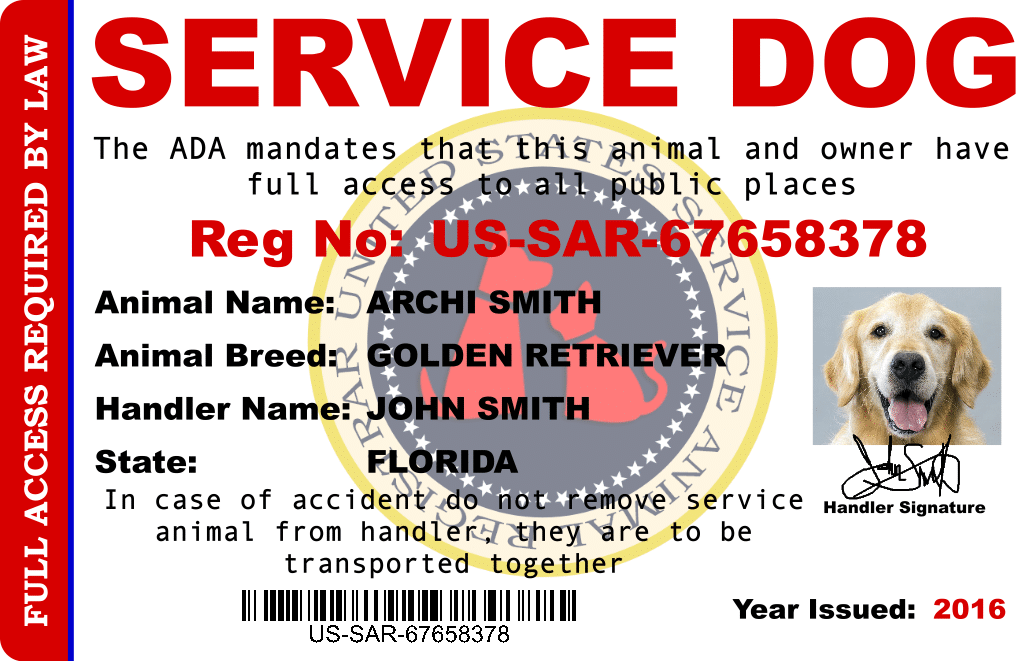 When a dog retires, most often it is taken in by the cynologist who worked with it. But if this does not happen, there are many people who want to work pensioners, or the animal remains in dog training centers and the state takes care of it. In any case, loneliness does not threaten the animal.
When a dog retires, most often it is taken in by the cynologist who worked with it. But if this does not happen, there are many people who want to work pensioners, or the animal remains in dog training centers and the state takes care of it. In any case, loneliness does not threaten the animal.
15 advantages of owning a dog: advantages of pets
Often people become pet lovers unexpectedly: by adopting a homeless dog, succumbing to the request of a child. Whatever the reason, becoming the owner of a dog, it is impossible not to be imbued with love and respect for these animals.
Often, people become pet lovers unexpectedly: by adopting a stray dog, succumbing to the request of a child. Whatever the reason, becoming the owner of a dog, one cannot help but feel love and respect for these animals.
There are 15 reasons that most often push people to get a dog.
1. Communication with animals reduces stress
For many people, communication with a dog helps to cope with stress and fatigue.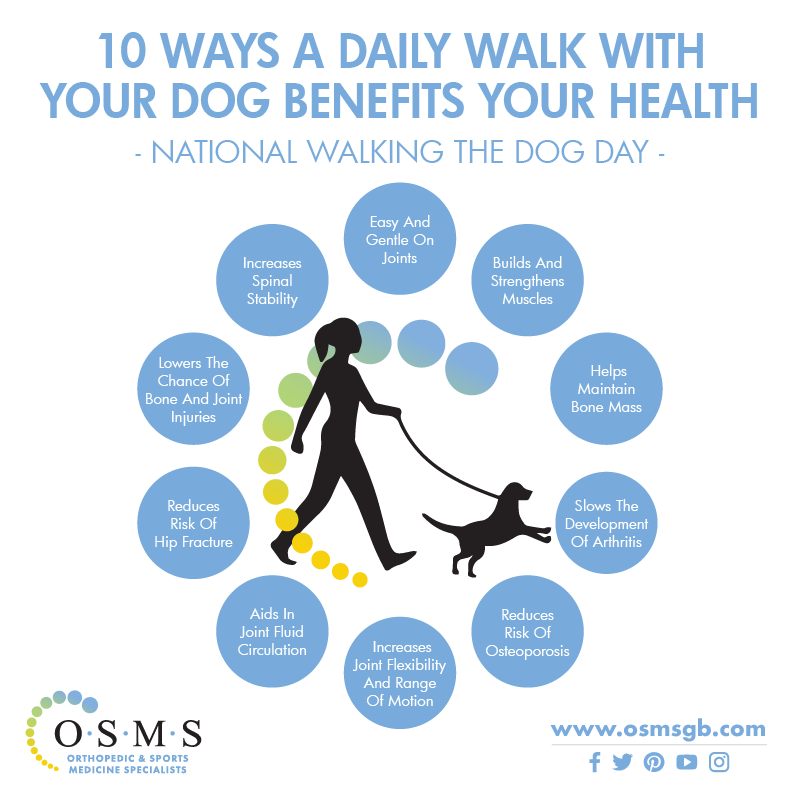 During active games with a pet, blood pressure normalizes, the blood supply to the brain improves, due to which a person feels an emotional upsurge. Dog owners are more organized, so they endure psychological and physical overload more easily. There is even an opinion that dog breeders live longer than those who do not have warm feelings for pets.
During active games with a pet, blood pressure normalizes, the blood supply to the brain improves, due to which a person feels an emotional upsurge. Dog owners are more organized, so they endure psychological and physical overload more easily. There is even an opinion that dog breeders live longer than those who do not have warm feelings for pets.
2. A reason to move more and start playing sports
Dogs love their owners not for their appearance, talents and success at work, but simply because they exist. The selfless and boundless love of your pet is a great incentive to start playing sports. When you bring a puppy home, you will have to take a walk in the fresh air every morning to walk the dog, keep fit to play with your pet; take care of your health, because in case of illness there will be no one to take care of your animal. Use the arrival of a dog in your home as an excuse to get active.
3. Nanny and friend for children
When listing the advantages of dogs, one cannot ignore how carefully and zealously they treat children.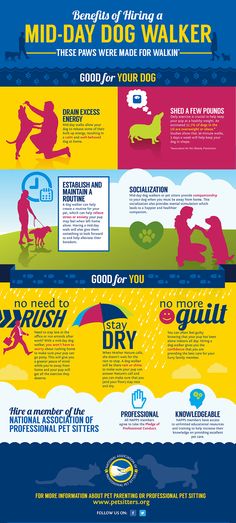 A four-legged friend will become a caring and attentive nanny for children: she will look after a sleeping child, play with him or, conversely, calm him down.
A four-legged friend will become a caring and attentive nanny for children: she will look after a sleeping child, play with him or, conversely, calm him down.
4. Raising responsibility in children
Communication with a dog teaches children responsibility, sensitivity and patience. You can take part in the "We are your friends" program, which is aimed at fostering a culture of communication with pets and caring for them. Caring for a dog helps a child gain self-confidence and self-esteem. With his pet, it will be easier and more interesting for him to do household chores and school assignments.
5. A reason to change your lifestyle
When a dog appears in the house, you simply cannot be irresponsible and lazy. You will have to change your lifestyle, daily routine in order to take your pet for a walk on time, feed it, educate and train it.
A dog will not be obedient if it is not taught discipline from childhood, it needs frequent walks and a feeding regimen to maintain health and physical activity. To provide comfortable living conditions for her, you will have to adapt to her "biorhythms" and temperament: get up early, walk in the mornings and evenings, do not stay at work if the pet does not tolerate loneliness.
To provide comfortable living conditions for her, you will have to adapt to her "biorhythms" and temperament: get up early, walk in the mornings and evenings, do not stay at work if the pet does not tolerate loneliness.
6. New acquaintances and social circle of dog breeders
Your social circle will expand, because you will need to discuss the problems of raising and training a pet with someone. You will meet not only people who, like you, do not have deep knowledge in keeping pets, but also experienced dog breeders, cynologists, veterinarians. Among dog owners there are people of various professions and ages. You will be able to make new acquaintances, find friends and like-minded people with whom you can share the problems and successes of your relationship with the dog.
7. A true friend with whom you will not get bored
The dog will always be there, it will become your true friend with whom it is interesting to spend time. Pets quickly become attached to the owner and remain faithful to him until the end of their lives. You won’t get bored with them: they are always ready to join the game, they are happy to pose at family photo shoots. With them you can travel by car, play football, relax in nature - any of your activities with a dog will become much more exciting.
You won’t get bored with them: they are always ready to join the game, they are happy to pose at family photo shoots. With them you can travel by car, play football, relax in nature - any of your activities with a dog will become much more exciting.
8. Dogs save lives
The advantages of a dog lie not only in its natural sociability and openness, but also in its developed instincts. These animals have a subtle and sensitive sense of smell, which is why they are used in the work of saving people after disasters and earthquakes. Thousands of cases are known when they helped find lost children, warned about fires and floods. In pets of service breeds, such abilities are more developed, however, after special training, guarding skills can be taught to any dog.
9. New knowledge
To properly care for a dog, you will have to learn a lot of new things: how to feed the animal, how to protect it from diseases, how to train and socialize. The owner is responsible for the behavior of the pet, so every dog owner is advised to enroll in training courses and learn how to control the dog.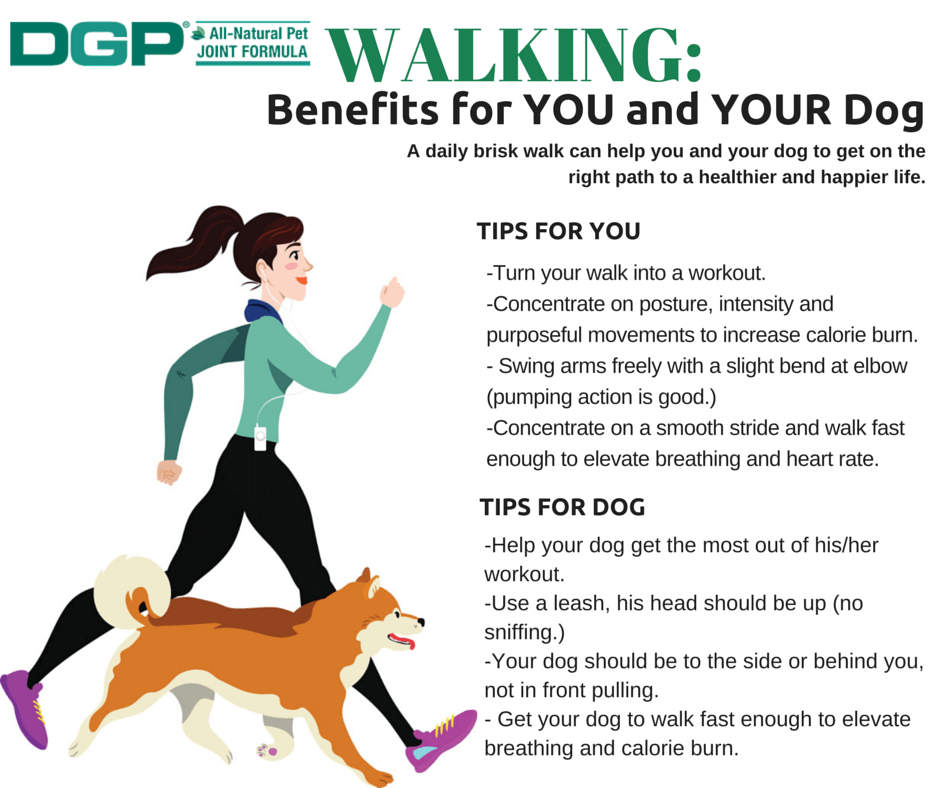 The more you know about the habits and physiology of pets, the faster you will establish contact with your dog, win his trust and love.
The more you know about the habits and physiology of pets, the faster you will establish contact with your dog, win his trust and love.
10. Close-knit, friendly family
It is believed that in families where there is a dog, there are fewer conflict situations and domestic quarrels. Thanks to a pet, family members communicate more with each other, are united by common interests and care for the animal. Caring for a dog helps to realize the responsibility for her life, to understand how important the attention and love of people are for her.
11. Assistance to the sick and treatment
If a special child is growing up in the family or if there are problems for elderly people close to you, get a service dog. There are guide dogs that help people with disabilities move around the street, ride public transport. A pet can play the role of a nurse for a bedridden patient - bring him the necessary things.
Specially trained dogs are used in canistherapy.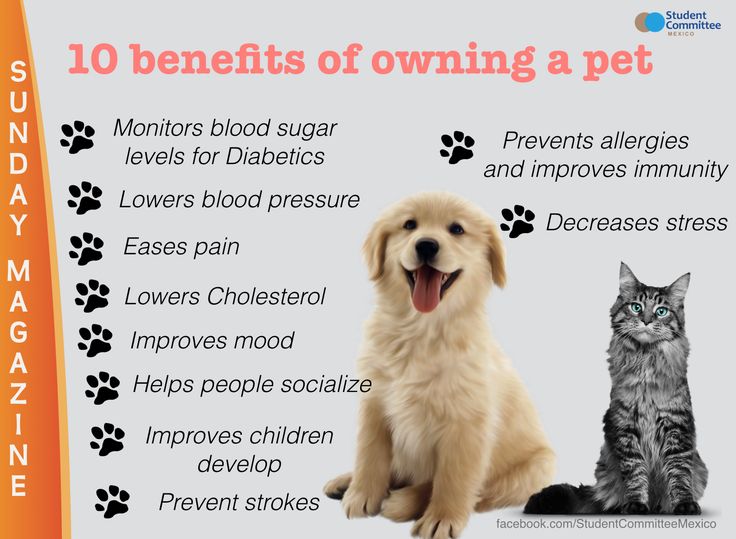 It is an increasingly popular treatment for various physical ailments, negative mental conditions, and developmental disabilities. Communication with an animal helps to get rid of stress, anxiety, aggression, hyperactivity, to instill communication skills in children and adults immersed in their own world (autistics), people who have difficulty adapting in a team.
It is an increasingly popular treatment for various physical ailments, negative mental conditions, and developmental disabilities. Communication with an animal helps to get rid of stress, anxiety, aggression, hyperactivity, to instill communication skills in children and adults immersed in their own world (autistics), people who have difficulty adapting in a team.
It is believed that communication with a dog is useful for people with intellectual disabilities (Alzheimer's disease, multiple sclerosis). They help to quickly return to a full life after strokes and heart attacks.
12. Salvation from loneliness
If you don't have many friends because of limited opportunities or being busy at work, get a dog. She will become your faithful companion for life. Pets have developed intuition and curiosity, so they quickly remember the habits of the owner and adapt to them. Communication with an animal will diversify your life, allow you to see its best sides.
13.
 Travel companion
Travel companion Many advantages of a dog - friendliness, fidelity, devotion - are well known. Also, a pet can become a travel partner. He will not only ensure your safety, but will also be able to carry a small load if you purchase a special satchel for him in advance. Dogs are unpretentious to camping conditions, and on a journey they will have the opportunity to throw out their energy, train their endurance.
Pets travel by car with pleasure, they tolerate plane flights and train trips very well. You do not need to be separated when you are going out of town for a picnic or leaving for a resort abroad.
14. Support at any time
You will always feel the love of your four-legged friend. He does not need to be taught sensitivity and responsiveness, he is always friendly towards the owner. The presence of a dog in the house gives a sense of security and calmness. Sociable and contact animals provide emotional support, help stabilize the mental state, and cope with stress.
In some countries, pets are specially trained and qualified as Emotional Support Dogs. Such animals are allowed to fly on an airplane with their owner to help him cope with various phobias during the flight.
15. Learn to take care of someone else
Psychologists recommend getting a dog for families with children, because communication with her becomes an example of disinterested care and love. A pet is completely dependent on a person and accepts all the pros and cons of the owner without judgment.
The appearance of a dog in the house inevitably leads to a revision of the responsibilities of all family members, but the new responsibility, as a rule, does not frighten either children or adults. The pet will grow, and with it the feeling of mutual understanding and friendship will grow.
The main thing that gives communication and care for a dog is a feeling of trust and responsibility for the fate of the animal. You teach your pet how to go to the toilet, know his place, follow commands, try to find the best food for him, worry when he gets sick, and gradually become kinder and more responsive.